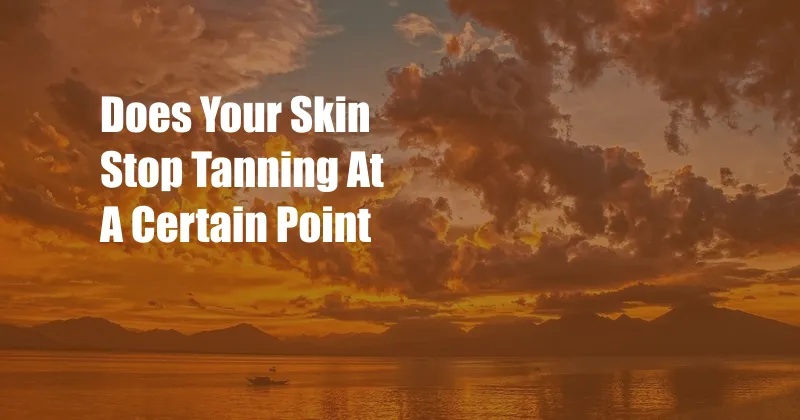
Does Your Skin Stop Tanning at a Certain Point?
As someone who loves spending time outdoors, I’ve often wondered if there’s a limit to how much my skin can tan. After all, I’ve noticed that after a few days of sun exposure, my skin doesn’t seem to get much darker. Is there a point where tanning simply stops?
The Science Behind Tanning
To understand if skin stops tanning, we need to delve into the science behind the process. Tanning occurs when the skin is exposed to ultraviolet (UV) radiation from the sun or tanning beds. UV radiation triggers the production of melanin, a pigment that gives skin its color.
Melanin acts as a protective barrier against the harmful effects of UV radiation. When skin is exposed to UV radiation, the body produces more melanin to shield itself from further damage. This is why our skin gets darker after sun exposure.
Does Tanning Stop?
Contrary to popular belief, skin does not stop tanning at a certain point. However, the rate at which skin tans may slow down over time. This is because as the skin produces more melanin, it becomes more resistant to UV radiation. As a result, the skin may not tan as quickly or as deeply as before.
Factors Affecting Tanning
The rate at which skin tans can also be influenced by several factors, including:
- Skin type: Fair skin contains less melanin and is more prone to sunburn than darker skin.
- Genetics: Some people are more likely to tan than others based on their genes.
- Sun exposure: The duration and intensity of sun exposure can affect the rate of tanning.
- Age: Skin tends to tan more slowly as we age.
- Use of sunscreen: Sunscreen can inhibit the production of melanin, slowing down the tanning process.
Tips for Safe Tanning
While skin may not stop tanning, it’s important to tan responsibly to minimize the risks of skin damage. Here are some tips:
- Use sunscreen: Apply sunscreen with a minimum SPF of 30 and reapply every two hours.
- Avoid prolonged sun exposure: Limit sun exposure during peak hours (10 am to 4 pm).
- Seek shade: Find shade under trees or umbrellas when possible.
- Wear protective clothing: Cover up with lightweight, long-sleeve clothing and a wide-brimmed hat.
- Avoid tanning beds: Tanning beds emit high levels of UV radiation and significantly increase the risk of skin damage.
FAQ
Q: Why does my skin sometimes burn instead of tanning?
A: If your skin burns easily, it means you have fair skin and are more susceptible to UV damage. It’s essential to protect your skin with sunscreen and avoid prolonged sun exposure.
Q: Can I get cancer from tanning?
A: Yes, tanning, whether through sun exposure or tanning beds, can increase the risk of skin cancer, including melanoma, the deadliest form.
Q: How can I reverse a tan?
A: Tanning is a natural process, and it may take some time for your skin to return to its original color. Exfoliation and the use of skin-lightening products can help fade a tan gradually.
Conclusion
While skin may not stop tanning indefinitely, the rate at which it tans can slow down over time. It’s crucial to tan responsibly by protecting your skin from the harmful effects of UV radiation. By following safe tanning practices, you can enjoy the benefits of a healthy tan without putting your skin at risk.
Are you interested in learning more about tanning and skin care? Leave a comment below to engage with the topic further.